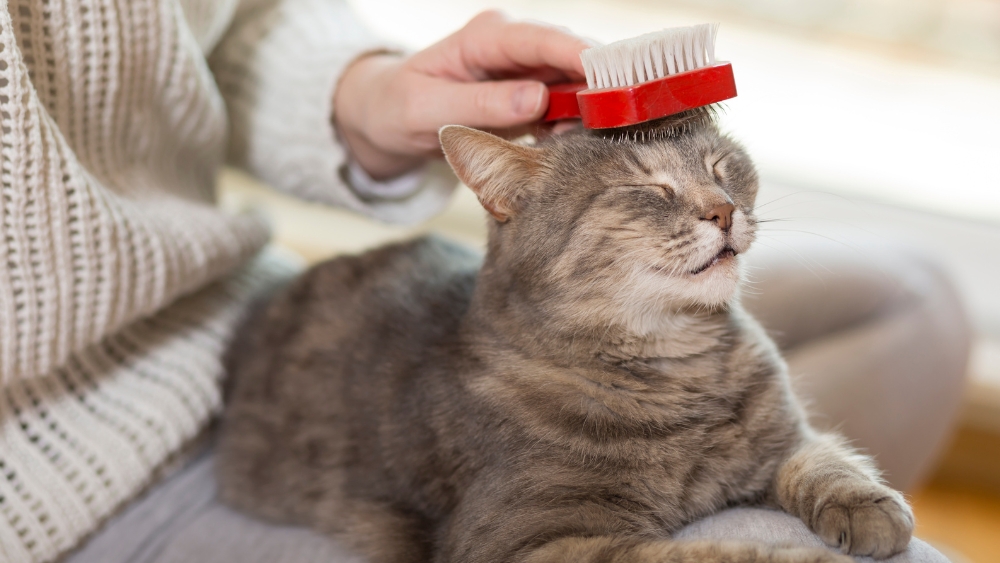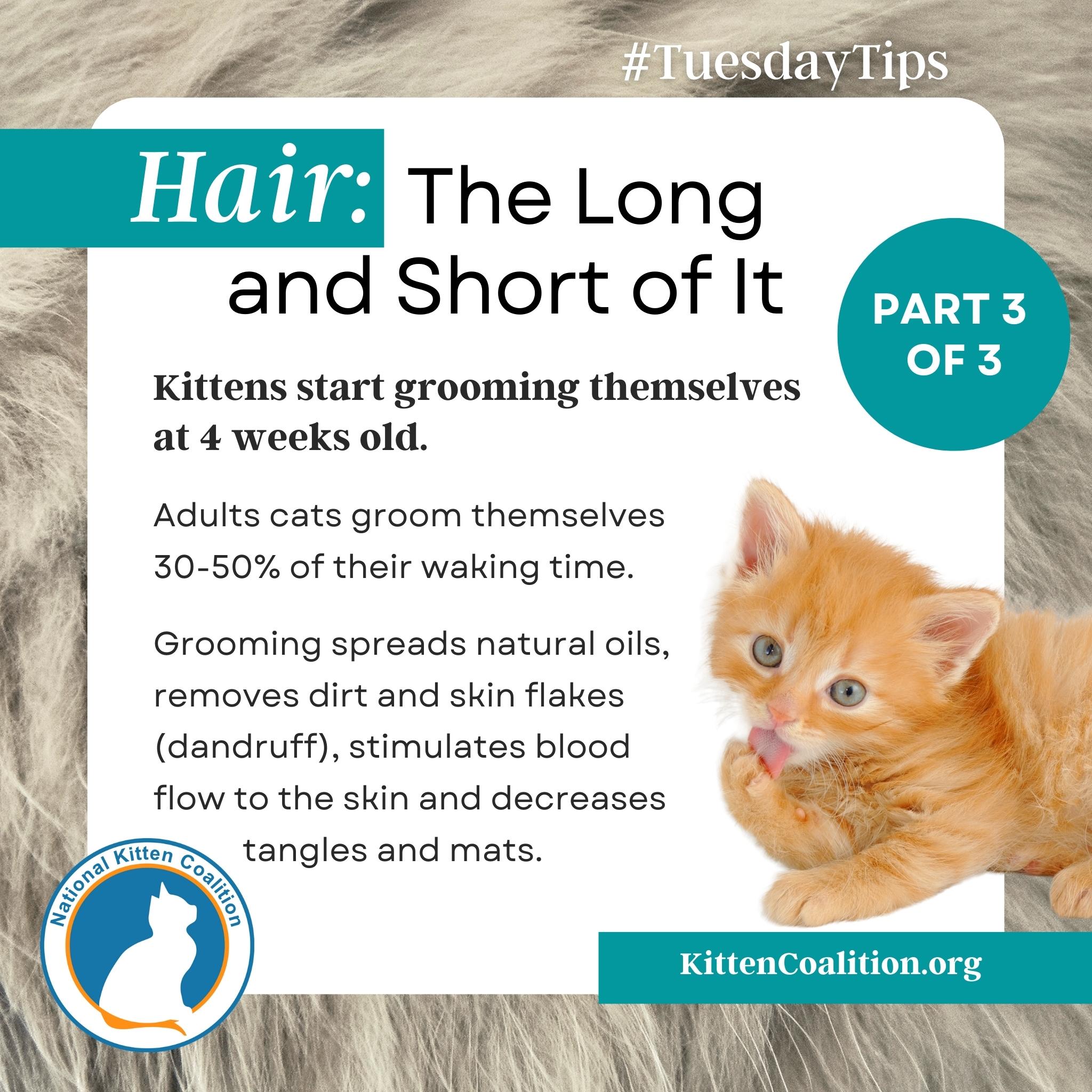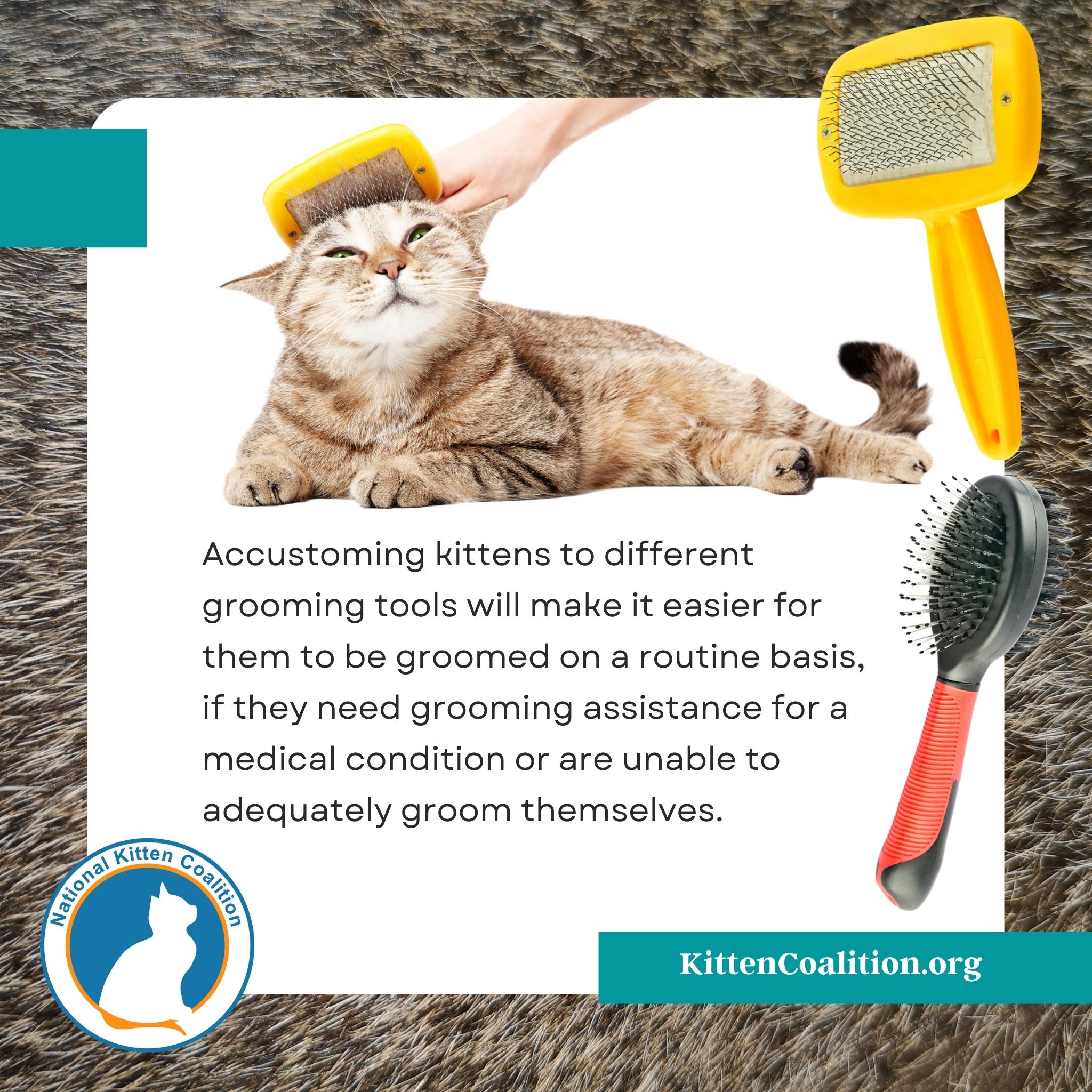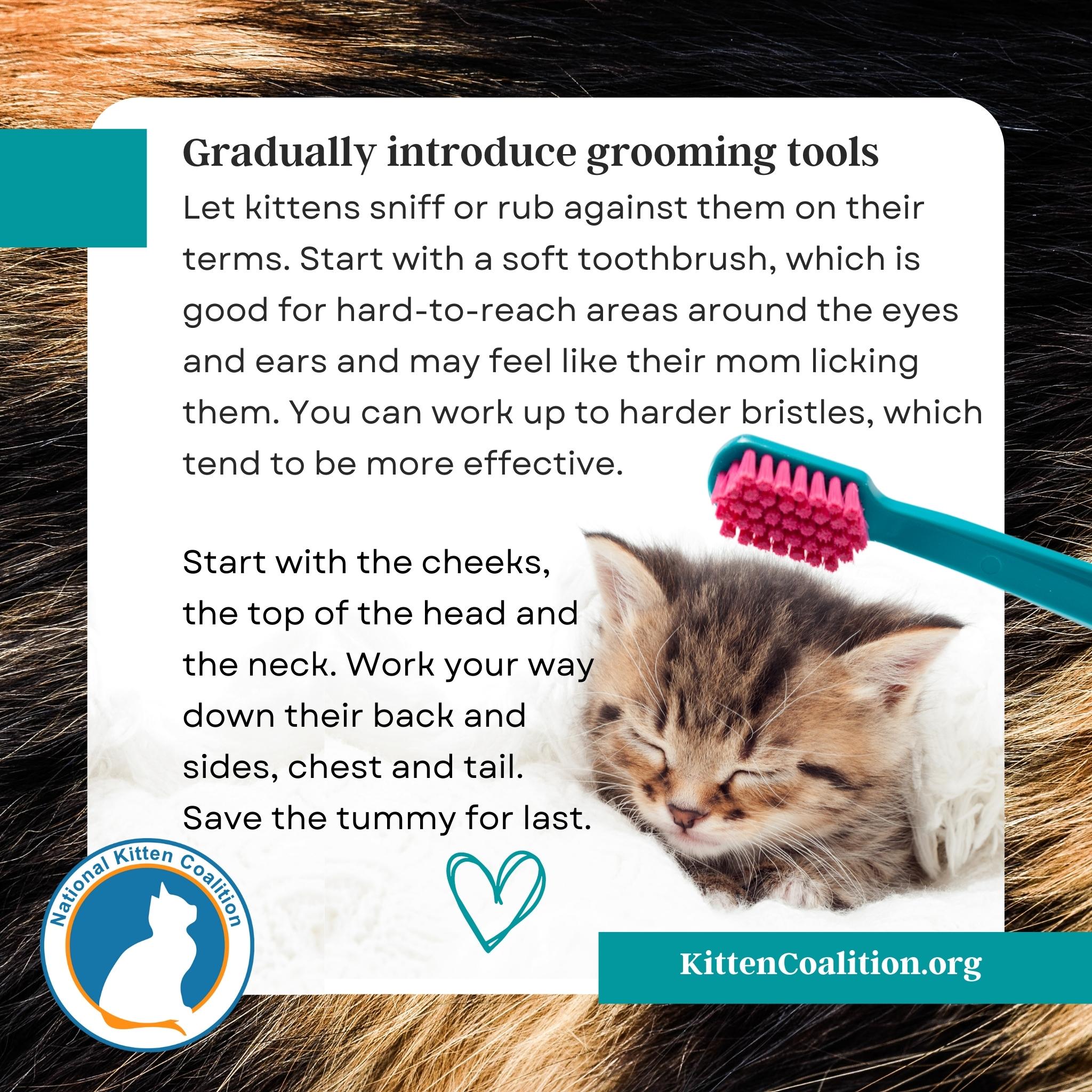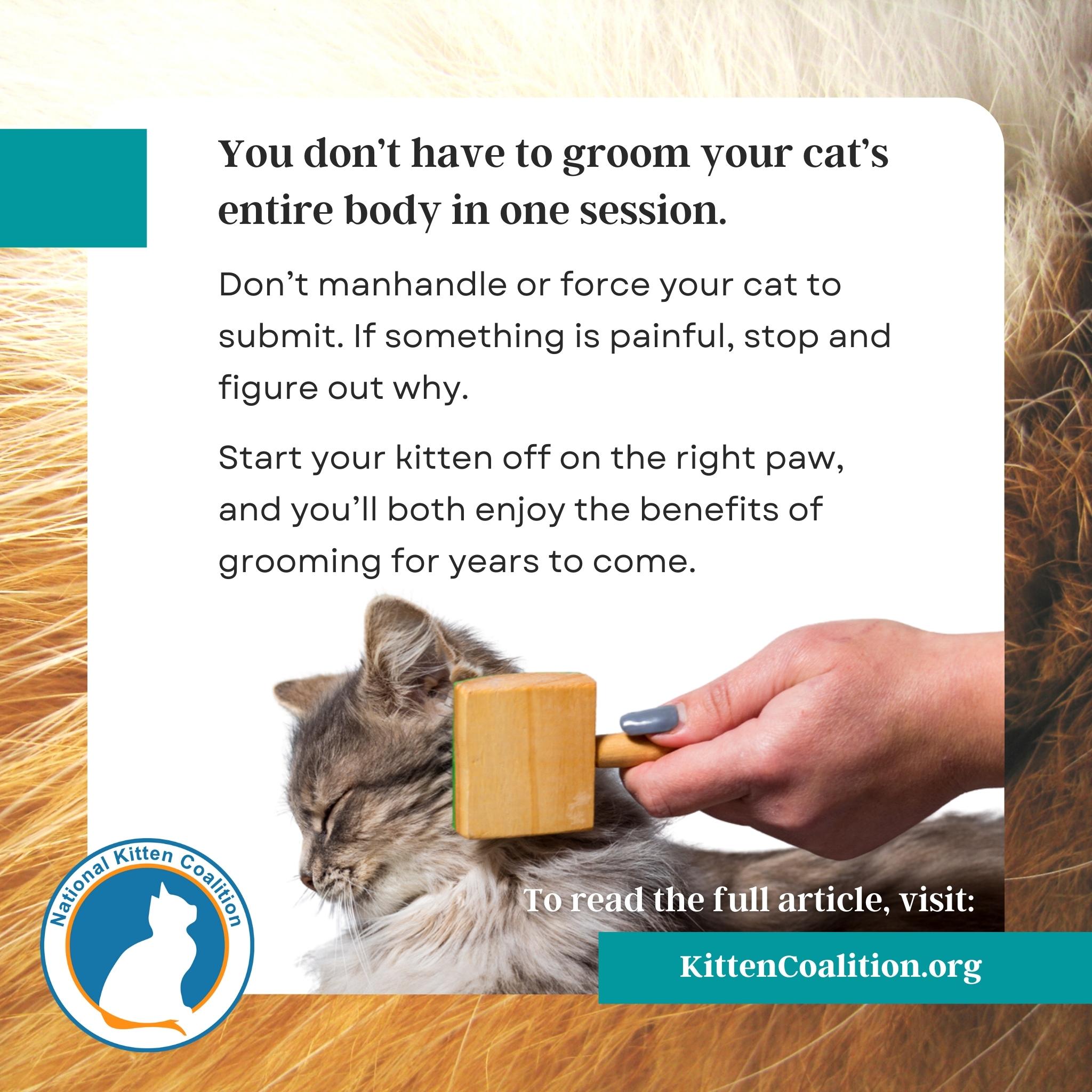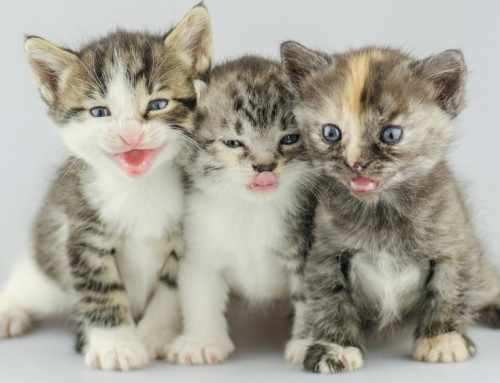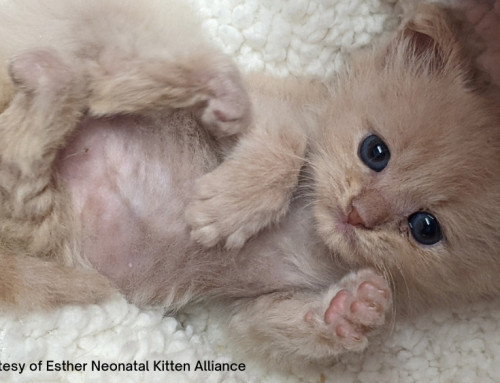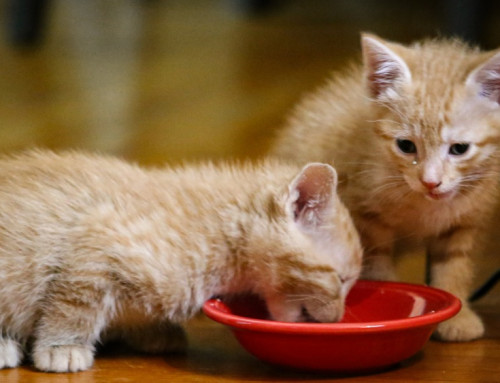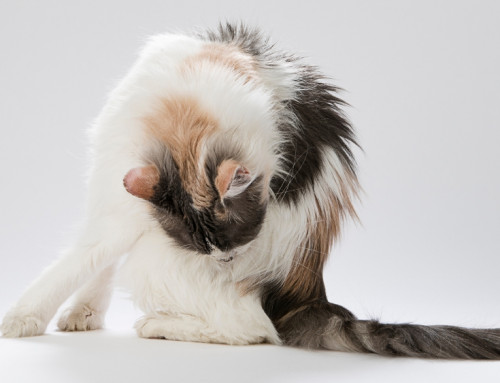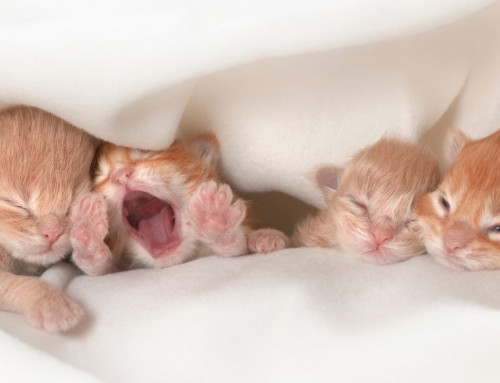Share this resource or email it to a friend!
In part 3 of this 3-part series, we discuss grooming. In part 1, we discussed what hair is, types of hairs and how hair grows; in part 2 we discussed hair colors, patterns and lengths.
Kittens start grooming themselves when they are 4 weeks old. When they reach adulthood, cats will groom themselves 30-50 percent of their waking time. Grooming helps spread natural oils, remove dirt and skin flakes (dandruff), stimulate blood flow to the skin and decrease tangles and mats (which can be painful and makes grooming themselves difficult). When you groom your cats, you assist in those important tasks and help limit the amount of hair they shed and vomit around the house. Grooming your cat also alerts you to fleas, hair loss, wounds and other health concerns. Grooming should be done gently and calmly, alternating with soft petting and talking. Offering treats can help your cat associate grooming with a positive experience and strengthen the human-animal bond.
When cats groom themselves, their raspy tongue catches loose hairs. Their technique consists of short, repeated licks. When you groom your cat, use short, repeated strokes rather than long swipes with a comb or brush.
Many tools can be used for grooming. Accustoming kittens to different tools will make it easier for them to be groomed on a routine basis as well as if they need grooming assistance for a medical condition or if they’re unable to adequately groom themselves. Gradually introduce grooming tools to your kitten by letting them sniff or rub against them on their terms. Keep tools within reach of favorite catnap places, and try grooming kittens when they’re sleepy. You can start with a soft toothbrush, which may feel like their mom licking them, and may be better tolerated by tender kitten skin. Toothbrushes are also good for hard-to-reach areas around the eyes and ears. Over time, you can work your way up to harder bristles, which tend to be more effective.
Try different types of brushes to find out which work best for your cat. A soft brush is generally enough for a short-haired cat, and a flea comb can be used to remove dead hair and search for fleas. Long-haired cats will likely need several tools: the thin, curved metal hooks of a slicker brush help remove loose fur and dirt while detangling; a wide-toothed comb helps deal with tangles; a de-shedding brush helps prevent matting and removes loose fur from the undercoat; and a pin brush works well to remove knots and tangles while gently massaging and stimulating the skin; a grooming glove helps to smooth and shine the fur.
In general, there are parts of their bodies where most cats enjoy being groomed and parts that they don’t enjoy. So, save the not-so-fun parts for last. Start at the cheeks (careful not to grab a whisker), the top of the head and the neck. Work your way down their back and sides, their chest and tail. Save the tummy for last. And remember, you don’t have to groom your cat’s entire body in one, long, drawn-out session. Don’t manhandle or force your cat to submit. If something is painful, stop and figure out why. Always comb or brush the fur in the direction that the hair grows. No one wants their hair tussled.
Cats enjoy routine, so try grooming them at the same time every day. While some cats put up with grooming, others love the attention. You can probably get by with weekly brushing for shorter-haired cats. Long-haired cats typically need more frequent brushing, possibly daily, to prevent mats and tangles. Pay attention to the armpits, behind the ears and the back of the rear legs, where hair easily knots and is easily missed.
Long-haired cats don’t usually need to be shaved to deal with warmer temperatures, but if they’re prone to matting, won’t tolerate brushing or find it difficult to groom themselves (they can’t reach certain spots because they’re overweight or have arthritis that makes it painful to get to certain spots), they may benefit from shaving. A visit to a professional groomer may be necessary; a veterinary visit may be necessary if sedation is required, because removing mats is painful or stressful.
Although some cats may not adequately groom themselves, others may excessively groom themselves. This could be caused by a medical problem, but it’s usually a mental or emotional problem caused by a stressful situation, such as moving to a new place or the introduction of a new pet. Grooming releases feel-good hormones called endorphins and helps calm cats.
Cats may overgroom when they’re alone or at night, Pet parents may not notice their cat overgrooming because it may occur at night or when the cat is alone. However, missing fur and damaged skin will be evident. Try to identify and modify the stressful situation, and get professional medical and behavioral treatment for cats who overgroom.
Whatever you call it — hair, fur or coat — caring for it is much more than about just looking pretty. Start your kitten off on the right paw, and you’ll both enjoy the benefits of grooming for years to come.

